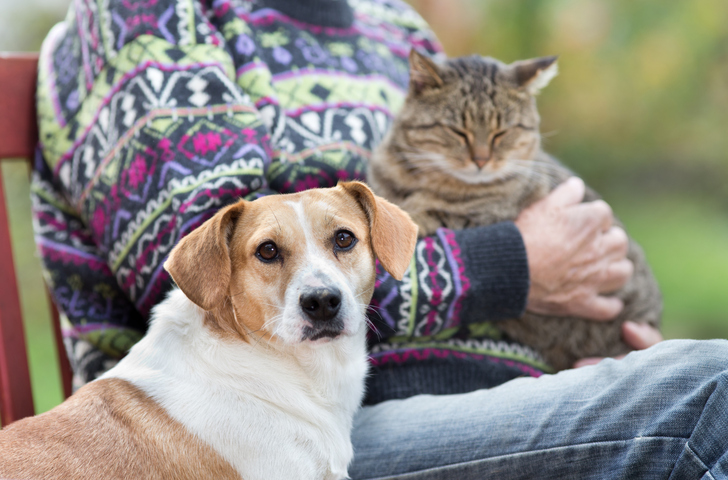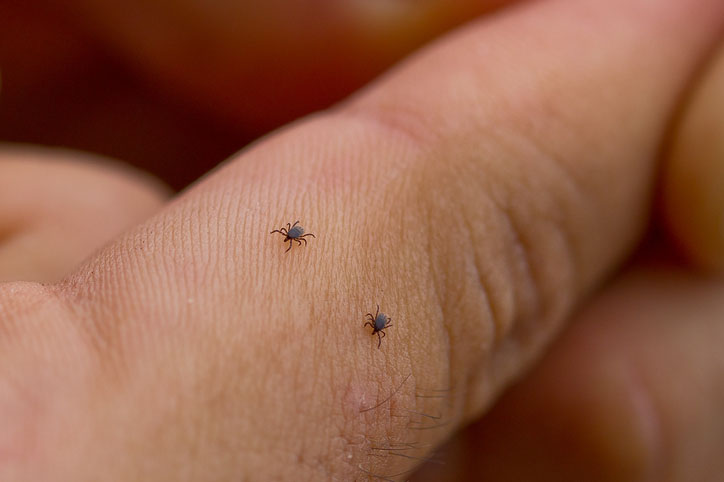Disorders of the Rectum and Anus in Cats
- Digestive Disorders of Cats
- Introduction to Digestive Disorders of Cats
- Congenital and Inherited Disorders of the Digestive System in Cats
- Dental Development of Cats
- Dental Disorders of Cats
- Disorders of the Mouth in Cats
- Disorders of the Pharynx in Cats
- Disorders of the Esophagus in Cats
- Vomiting in Cats
- Disorders of the Stomach and Intestines in Cats
- Disorders Caused by Bacteria of the Digestive System in Cats
- Gastrointestinal Parasites of Cats
- Disorders Caused by Protozoa of the Digestive System in Cats
- Disorders of the Pancreas in Cats
- Disorders of the Liver and Gallbladder in Cats
- Disorders of the Rectum and Anus in Cats
Also see professional content regarding disorders of the rectum and anus.
Rectal diseases in cats can result from injuries, tumors, or infections.
Anal Sac Disease
The anal sacs are glands located on each side of the anus. They are related to the scent glands in skunks and produce small amount of dark, foul-smelling liquid which is normally squeezed out during defecation. Anal sac disease is caused by clogging or infection of the glands. Anal sacs may become clogged (impacted), infected, abscessed, or cancerous. Anal sac disease is much less common in cats than in dogs. In cats, the most common form of anal sac disease is impaction.
Signs are related to pain and discomfort associated with sitting. The cat may scoot its buttocks on the ground, lick or bite at the anal area, and have painful defecation with straining. If the glands are impacted, hard masses can be felt in the area of the sacs. A rectal examination by a veterinarian will usually be done to diagnose anal sac disease. Additional tests may be needed if infection or a tumor is suspected.
Your veterinarian can often squeeze out impacted anal sacs by hand. If the material in the sacs is too hard or dry, your veterinarian may inject a softening agent into the sac. If infection is present, antibiotics might be prescribed. Supplemental fiber may be recommended to increase fecal bulk, which facilitates anal sac compression and emptying. If treatment is ineffective or the condition keeps coming back, surgical removal of the sac(s) may be required. A common complication from this surgery is fecal incontinence; however, the incontinence is usually temporary.
Rectal and Anorectal Narrowing (Strictures)
A rectal or anorectal stricture is a narrowing of the rectum or anus caused by scar tissue. Injuries that lead to strictures may result from foreign objects or trauma (such as bite wounds or accidents), or they may be a complication of inflammation. In cats, anorectal strictures are more common than rectal strictures, but neither condition is frequent.
Rectal Tumors
Rectal Polyps
The growths called rectal polyps occur infrequently in cats. The polyps are usually benign (noncancerous) and do not spread. Signs include straining to defecate, blood in the feces, and diarrhea. The polyp can be felt by a veterinarian during a rectal examination, and its surface tends to bleed easily. An endoscopic examination may be required to see the polyp. Periodically, the polyp may protrude from the anus. Surgical removal is usually followed by rapid recovery and lengthy survival time. Your veterinarian may send a tissue sample from the polyp to a laboratory for microscopic analysis to confirm the diagnosis.
Rectal Prolapse
Rectal prolapse is a condition in which one or more layers of the rectum protrude through the anus. Prolapse may be classified as incomplete (only the innermost rectal layer is protruding) or complete (all rectal layers are protruding).
Cats of any age, breed, or sex may be affected, although the condition commonly occurs in young cats that have severe diarrhea or that routinely strain to defecate. Prolapse can be caused by a number of intestinal, anorectal, or urinary diseases.
An elongated, cylinder-shaped mass protruding through the anal opening is usually a sign of rectal prolapse. However, prolapses involving other parts of the intestine can have a similar appearance. No matter what type of prolapse is present, any tissue mass protruding from the anal opening should be promptly examined by a veterinarian.
Identifying and eliminating the cause of prolapse is a key part of treatment. Small or incomplete prolapses can often be manually replaced by the veterinarian while the cat is anesthetized. This is usually followed by partial closure of the anus with stitches for 5 to 7 days to prevent the prolapse from happening again. In cases where tissue death is evident or where the living tissue cannot easily be repositioned through the rectum, surgery may be required. After treatment, a moist diet and a stool softener are likely to be recommended. Diarrhea occurring shortly after surgery may require additional treatment and should be discussed with your veterinarian.
Rectal Tears
A tear in the rectum or anus can be caused by a sharp object (such as a bone, needle, or other rough material) making its way through the digestive tract or from injury such as a bite. The tear may involve only the surface layers of the rectum (partial tear) or penetrate all layers (complete tear). Signs may include constipation, straining, rectal bleeding, and reluctance to defecate. A diagnosis is based on these signs and inspection of the rectum and anus. Swelling may be present when the injury has been present for some time.
Treatment to avoid infection and close the wound should be started immediately. The tear will be cleaned and stitched closed. Depending on the location, abdominal surgery may be required. Antibiotics and stool softeners will probably be prescribed after surgery.
For More Information
Also see professional content regarding disorders of the rectum and anus.
- Digestive Disorders of Cats
- Introduction to Digestive Disorders of Cats
- Congenital and Inherited Disorders of the Digestive System in Cats
- Dental Development of Cats
- Dental Disorders of Cats
- Disorders of the Mouth in Cats
- Disorders of the Pharynx in Cats
- Disorders of the Esophagus in Cats
- Vomiting in Cats
- Disorders of the Stomach and Intestines in Cats
- Disorders Caused by Bacteria of the Digestive System in Cats
- Gastrointestinal Parasites of Cats
- Disorders Caused by Protozoa of the Digestive System in Cats
- Disorders of the Pancreas in Cats
- Disorders of the Liver and Gallbladder in Cats
- Disorders of the Rectum and Anus in Cats





